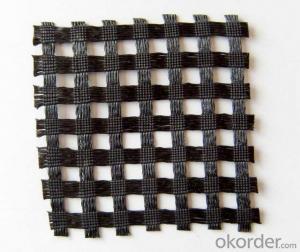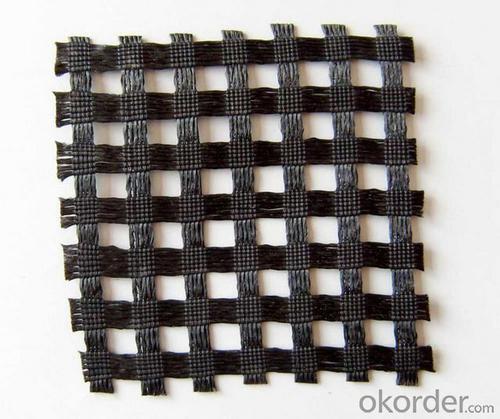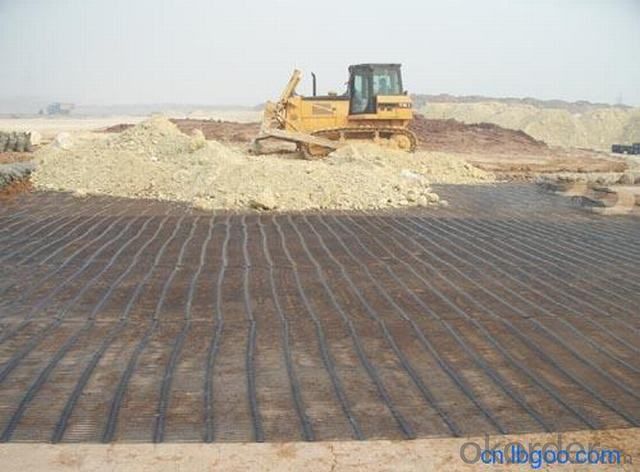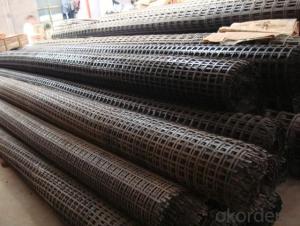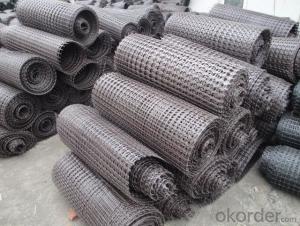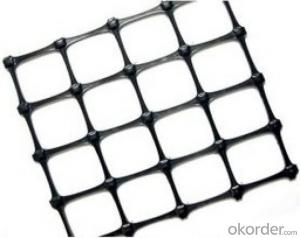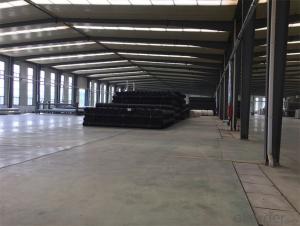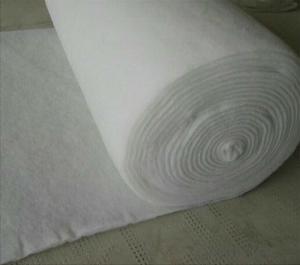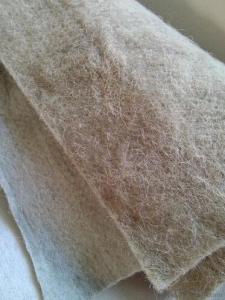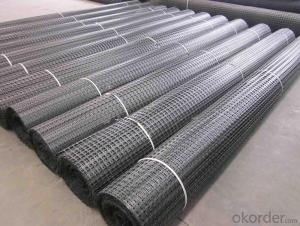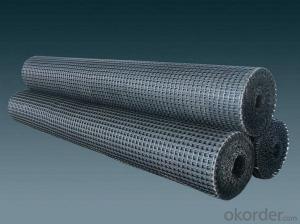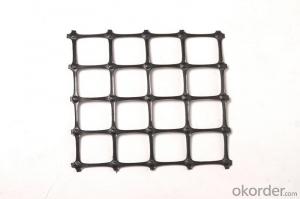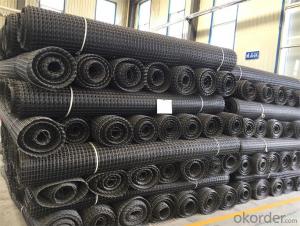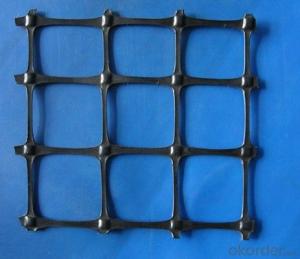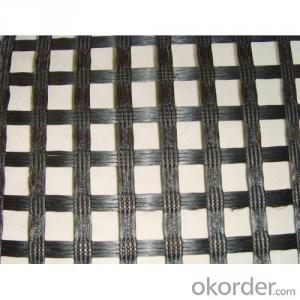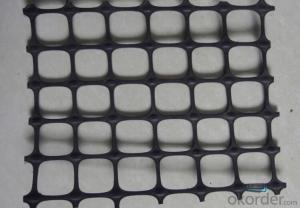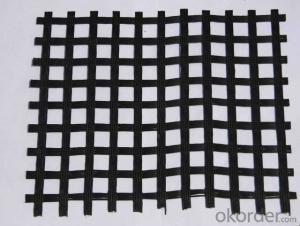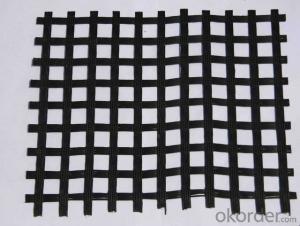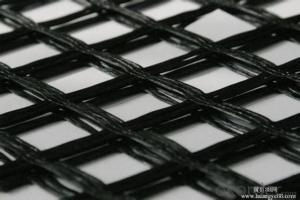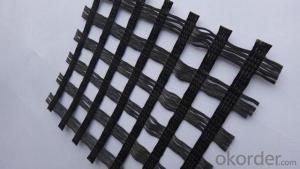HPDE Geocells Fiberglass Geogrid with CE Certification
- Loading Port:
- Qingdao
- Payment Terms:
- TT or L/C
- Min Order Qty:
- 20000 m²
- Supply Capability:
- 10000000 m²/month
OKorder Service Pledge
OKorder Financial Service
You Might Also Like
Fibergalss Geogrid Profile
Fiberglass geogrid is a new excellent maeterial used for reinforcing road surface and base, it made by fiberglass filament, and covered by special solution. High longitudinal and horizontal strength, low elongation rate, anti-alkali and aging resistance, widely used in asphalt road surface, concrete road surface and reinforceing road base.
Main Features of Fibergalss Geogrid
1.Tensile Strength (KN/m): 30X30KN/M,50x50KN/M,60X60KN/M,70X70KN/M,80X80KN/M
2. Elongation: 3%
3. Mesh Size: 25.4 x 25.4mm or 12.7x 12.7mm
4. Width: 1-6m
5.Temperature Resistance (Centigrade) : -100~290
6.Surface Processing: Modified asphalt or Polymer and self adhesive
7.Packing: with PE bag packing
Also detailed specification may be manufacturered according to your need.
if you are interest in our project, pleas contact me for further information.
Specifications of fiberglass
Specification | 1×1 | 1×1 | 1×1 | 1×1 | 1×1 | 2×2 | 2×2 | |
Strength | Long . Horiz | ≥30 | ≥50 | ≥60 | ≥80 | ≥100 | ≥60 | ≥80 |
≥30 | ≥50 | ≥60 | ≥80 | ≥100 | ≥60 | ≥80 | ||
Percentage of Elongation | 4% | 4% | 4% | 4% | 4% | 4% | 4% | |
Size of Hole mm | 25.4×25.4 | 25.4×25.4 | 25.4×25.4 | 25.4×25.4 | 25.4×25.4 | 12.7×12.7 | 12.7×12.7 | |
Flexibility | 76 | 76 | 76 | 76 | 76 | 76 | 76 | |
Width M | 1--6 | 1--6 | 1--6 | 1--6 | 1--6 | 1--6 | 1--6 | |
Temperature | -100200 | -100200 | -100200 | -100200 | -100200 | -100200 | -100200 | |
FAQ
1.Resistance to Fatigue Cracking of Fiberglass Geogrid
The fiberglass geogrid in asphalt surface can disperse the compressive strength and tensile strength produced when wheels rolled over the pavement. Buffer zone will be formed between two strength areas, and the strength is gradually changed rather than suddenly changed, thus the damage of strength to the asphalt surface is reduced. In the mean time, low elongation rate of the fiberglass geogrid reduced the deflection of the pavement, and protect the pavement from excessive deformations.
2.High Temperature Rutting Resistant of Fiberglass Geogrid
When using fiberglass geogrid in asphalt surface, it acts as skeleton in the surface. Aggregate in the asphalt concrete exists throughout the grid. A composite constraint force in the asphalt surface. The mutual containment of each other in asphalt surface prevents the bed-load of the asphalt surface and resists the effects of rutting.
3.Low temperature shrinkage cracking resistant of Fiberglass Geogrid
In low temperature, asphalt concrete will shrink in cold and tensile strength will be produced. If the tensile strength exceeds the tensile strength of asphalt concrete, it will crack. The application of fiberglass geogrid in asphalt surface, improves the horizontal tensile strength of the surface, and greatly improves the tensile strength of asphalt concrete, thus great tensile strength can be resisted without any damage. In addition, even if some area cracks, the strength in the crack will disappear in their transmission in fiberglass geogrid. Cracks will not develop into fissures.
4.Delay and reduce reflective fissures of Fiberglass Geogrid
Through paving fiberglass geogrid interlayer in the asphalt, the shearing or tensile strength caused by traffic load will be resisted, strain will be released. It will act as tensile improvement material of asphalt concrete, and the purpose to delay and reduce fissures will be achieved.
Product Photos
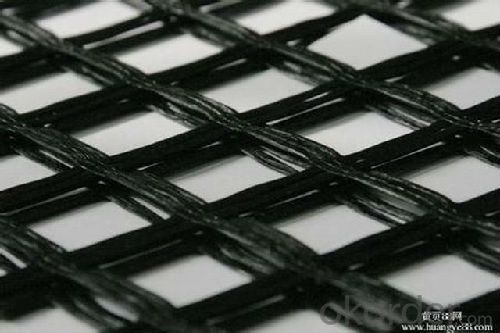
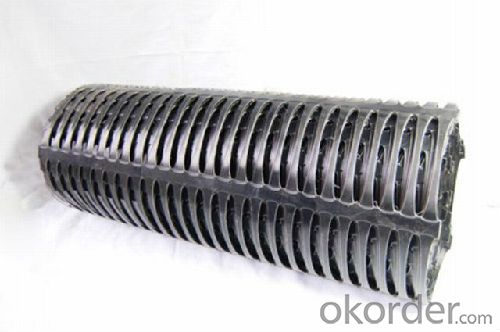

- Q: What materials are geogrids made of?
- Geogrids are typically made from a variety of materials, including polymers such as polyester, polyethylene, and polypropylene.
- Q: Can geogrids be used in reinforcement of foundation slabs?
- Yes, geogrids can be used in the reinforcement of foundation slabs. Geogrids are widely used in civil engineering projects to improve the stability and load-bearing capacity of soil. When placed in the foundation slab, geogrids help distribute the load more evenly, reducing the risk of cracking and settling. Additionally, geogrids provide enhanced resistance to lateral forces and can help mitigate the effects of soil expansion and contraction. Overall, geogrids can greatly improve the performance and longevity of foundation slabs.
- Q: What are the factors to consider when designing with geogrids for reinforced soil walls?
- When designing with geogrids for reinforced soil walls, there are several important factors to consider. Firstly, the type and strength of the geogrid material is crucial. The geogrid should have sufficient tensile strength and stiffness to effectively reinforce the soil and withstand the loads and stresses imposed on the wall. Secondly, the connection between the geogrid and the soil is critical. Proper anchoring and connection methods must be employed to ensure the geogrid remains securely in place and effectively distributes the loads throughout the reinforced soil structure. Additionally, the design should consider the wall height and slope angle, as these factors impact the stability and performance of the reinforced soil wall. The geogrid spacing and orientation must be determined based on these parameters to achieve the desired stability and load-bearing capacity. Other factors such as soil properties, water drainage, and environmental conditions should also be taken into account to ensure the long-term performance and durability of the reinforced soil wall. Overall, a comprehensive understanding of these factors is essential for successful design and construction with geogrids in reinforced soil walls.
- Q: EG65R type geogrid meaningWhat is the meaning of EG, said 65 per meter of tensile strength is 65kN? 65KN/m R will be broken? What is the meaning?
- 65 means should be the latitude to pull is 65KN for fiberglass and polyester grid, there is no argument per meter of tensile strength,
- Q: I asked what the raw materials needed for the production were, for example, what the green mesh was made of
- The single belt is formed by the longitudinal and horizontal spacing or the clamping arrangement, and the welding joint is formed by adopting the welding technology of special strengthening bonding to weld the joint. The use of polyethylene production by Seiko weaving. Color usually green or blue.
- Q: How do geogrids improve the performance of reinforced soil slopes in seismic areas?
- Geogrids improve the performance of reinforced soil slopes in seismic areas by providing stability and reinforcement to the soil structure. They enhance the tensile strength of the soil and distribute the applied loads more evenly, reducing the potential for slope failure during seismic events. Additionally, geogrids help to control soil erosion and prevent soil displacement, resulting in improved overall slope stability and resilience in seismic areas.
- Q: Can geogrids be used in reinforcement of mechanically stabilized earth retaining walls on soft soils?
- Yes, geogrids can be used in the reinforcement of mechanically stabilized earth retaining walls on soft soils. Geogrids are commonly used in such applications to provide additional tensile strength to the soil and improve its stability. By reinforcing the soil, geogrids help to counteract the lateral pressure exerted by the retained soil, thereby enhancing the overall performance and longevity of the retaining wall.
- Q: What are the applications of geogrids?
- Geogrids have various applications in civil engineering and construction projects. They are commonly used for soil stabilization, reinforcement of retaining walls and slopes, erosion control, and improving the load-bearing capacity of foundations. Geogrids also find application in road and railway construction, where they enhance pavement performance, reduce rutting, and increase overall durability. Overall, their main purpose is to provide strength and stability to different types of soil and structures, ensuring long-lasting and reliable infrastructure.
- Q: Can geogrids be used in landfill construction?
- Yes, geogrids can be used in landfill construction. Geogrids are commonly used to reinforce and stabilize various types of soil and are also suitable for landfill construction. They can enhance the stability and load-bearing capacity of the landfill structure, prevent soil erosion, and improve the overall performance and longevity of the landfill.
- Q: Can geogrids be used in reinforcement of bridge approach embankments over soft soils?
- Yes, geogrids can be used in the reinforcement of bridge approach embankments over soft soils. Geogrids are commonly utilized in civil engineering projects to enhance the stability and load-bearing capacity of soil structures. In the case of bridge approach embankments, geogrids can be installed to improve the overall strength of the soil, reduce settlement, and prevent potential failure or deformation caused by the soft soil conditions.
1. Manufacturer Overview
| Location | Shandong, China |
| Year Established | 2002 |
| Annual Output Value | Above US$ 20 Million |
| Main Markets | 20.00% North America 15.00% South America 15.00% Eastern Europe 10.00% Southeast Asia 10.00% Northern Europe 10.00% South Asia 10.00% Western Europe 5.00% Africa 5.00% Mid East |
| Company Certifications | ISO9001:2000; |
2. Manufacturer Certificates
| a) Certification Name | |
| Range | |
| Reference | |
| Validity Period |
3. Manufacturer Capability
| a) Trade Capacity | |
| Nearest Port | Qingdao Port |
| Export Percentage | 41% - 50% |
| No.of Employees in Trade Department | 6-10 People |
| Language Spoken: | English; Chinese; |
| b) Factory Information | |
| Factory Size: | Above 80,000 square meters |
| No. of Production Lines | Above 10 |
| Contract Manufacturing | Design Service Offered; Buyer Label Offered |
| Product Price Range | High; Average |
Send your message to us
HPDE Geocells Fiberglass Geogrid with CE Certification
- Loading Port:
- Qingdao
- Payment Terms:
- TT or L/C
- Min Order Qty:
- 20000 m²
- Supply Capability:
- 10000000 m²/month
OKorder Service Pledge
OKorder Financial Service
Similar products
Hot products
Hot Searches
Related keywords
